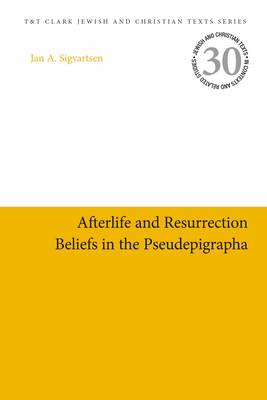
- Afhalen na 1 uur in een winkel met voorraad
- Gratis thuislevering in België vanaf € 30
- Ruim aanbod met 7 miljoen producten
- Afhalen na 1 uur in een winkel met voorraad
- Gratis thuislevering in België vanaf € 30
- Ruim aanbod met 7 miljoen producten
Zoeken
Omschrijving
Jan A. Sigvartsen seeks to examine the immense interest in life after death, and speculation about the fates awaiting both the righteous and the wicked, that proliferated in the Second Temple period. In this volume Sigvartsen analyses the texts of the Pseudepigrapha, identifies the numerous afterlife and resurrection beliefs they contain, and presents an analysis of these beliefs and how they functioned in the Second Temple period.
A careful reading of these diverse resurrection passages - from testaments to wisdom, philosophical literature, and prayers - reveals that most of these distinct life-after-death views, regardless of their complexity, show little evidence of systematic development relational to one another, and are often supported by several key passages or shared motifs from texts that later became a part of the TaNaKh. This volume examines testaments from Adam to the Twelve Patriarchs, expansions of stories and legends such as Joseph and Aseneth and the ladder of Jacob, and texts such as 4 Maccabees, before finally considering the posthumous body, the nature of the soul, and anthropological implications. Sigvartsen's study provides a deeper understanding of how texts that later became a part of the TaNaKh were read by different communities during this important period, and the role they played in the development of the resurrection belief - a central article of faith in both Christianity and Rabbinic Judaism.
This volume is a companion to Sigvartsen's work on afterlife and resurrection in the Apocrypha and the apocalyptic literature of the Pseudepigrapha.
A careful reading of these diverse resurrection passages - from testaments to wisdom, philosophical literature, and prayers - reveals that most of these distinct life-after-death views, regardless of their complexity, show little evidence of systematic development relational to one another, and are often supported by several key passages or shared motifs from texts that later became a part of the TaNaKh. This volume examines testaments from Adam to the Twelve Patriarchs, expansions of stories and legends such as Joseph and Aseneth and the ladder of Jacob, and texts such as 4 Maccabees, before finally considering the posthumous body, the nature of the soul, and anthropological implications. Sigvartsen's study provides a deeper understanding of how texts that later became a part of the TaNaKh were read by different communities during this important period, and the role they played in the development of the resurrection belief - a central article of faith in both Christianity and Rabbinic Judaism.
This volume is a companion to Sigvartsen's work on afterlife and resurrection in the Apocrypha and the apocalyptic literature of the Pseudepigrapha.
Specificaties
Betrokkenen
- Auteur(s):
- Uitgeverij:
Inhoud
- Aantal bladzijden:
- 360
- Taal:
- Engels
- Reeks:
- Reeksnummer:
- nr. 30
Eigenschappen
- Productcode (EAN):
- 9780567685544
- Verschijningsdatum:
- 5/09/2019
- Uitvoering:
- Hardcover
- Formaat:
- Genaaid
- Afmetingen:
- 156 mm x 234 mm
- Gewicht:
- 671 g

Alleen bij Standaard Boekhandel
+ 644 punten op je klantenkaart van Standaard Boekhandel
Beoordelingen
We publiceren alleen reviews die voldoen aan de voorwaarden voor reviews. Bekijk onze voorwaarden voor reviews.








